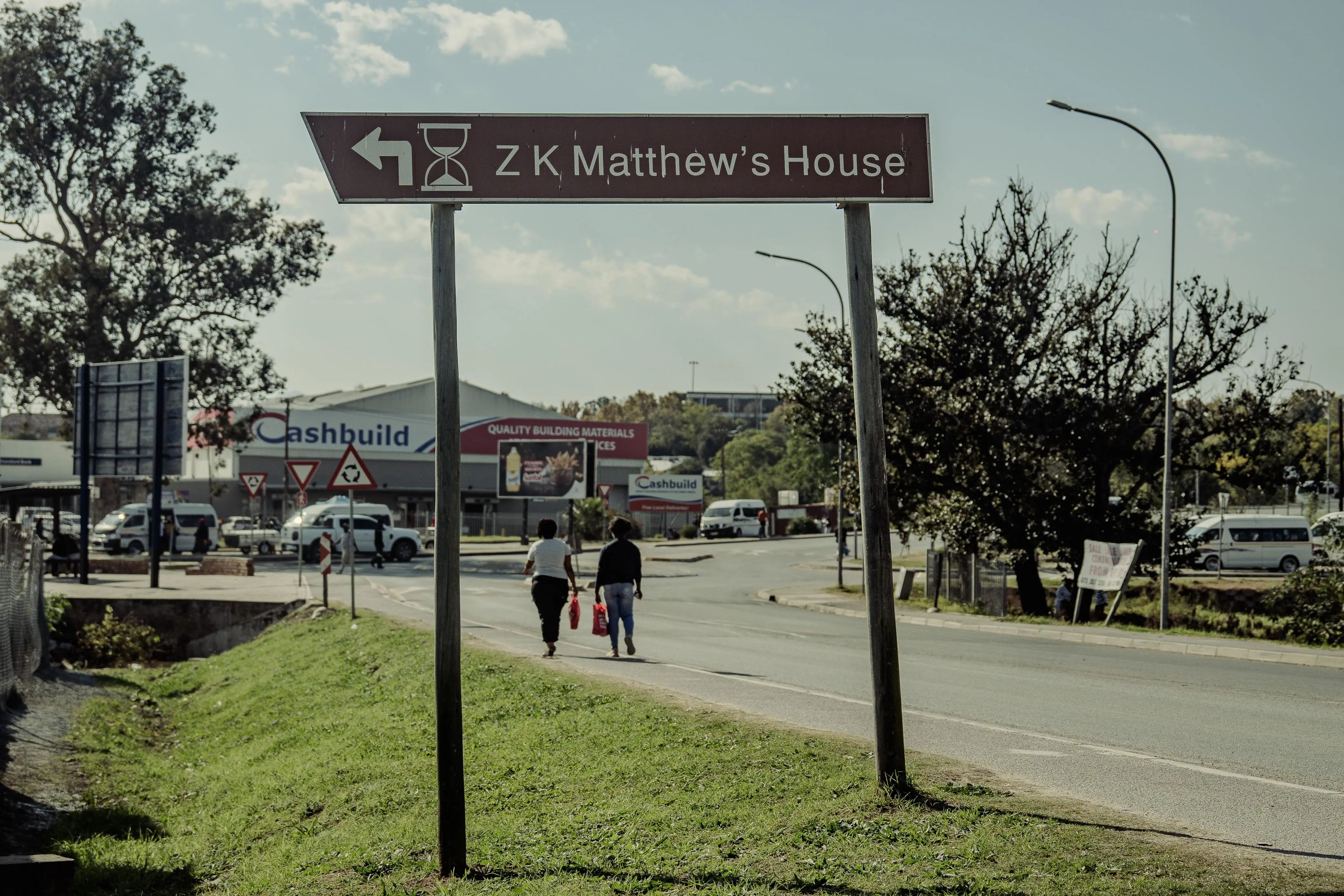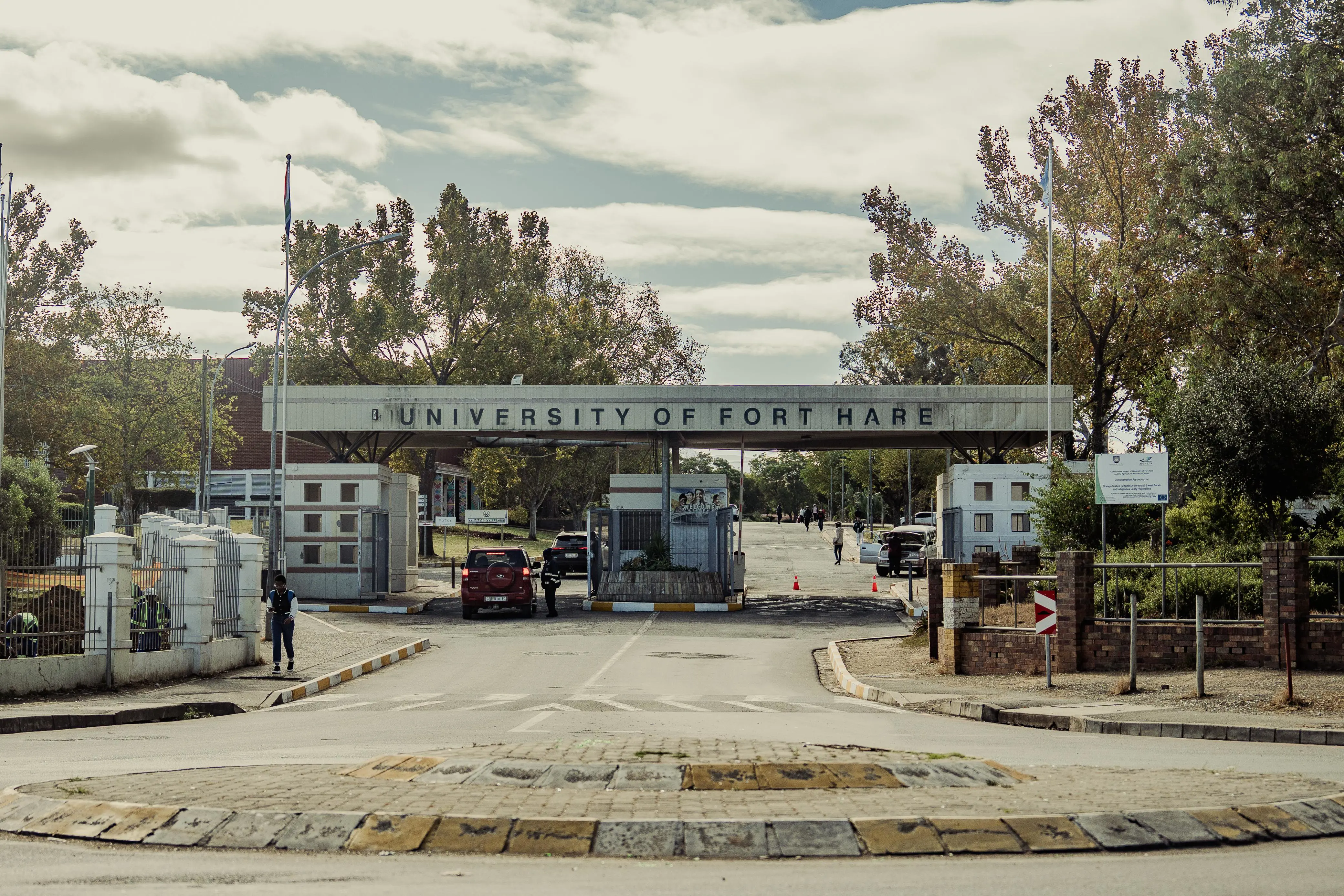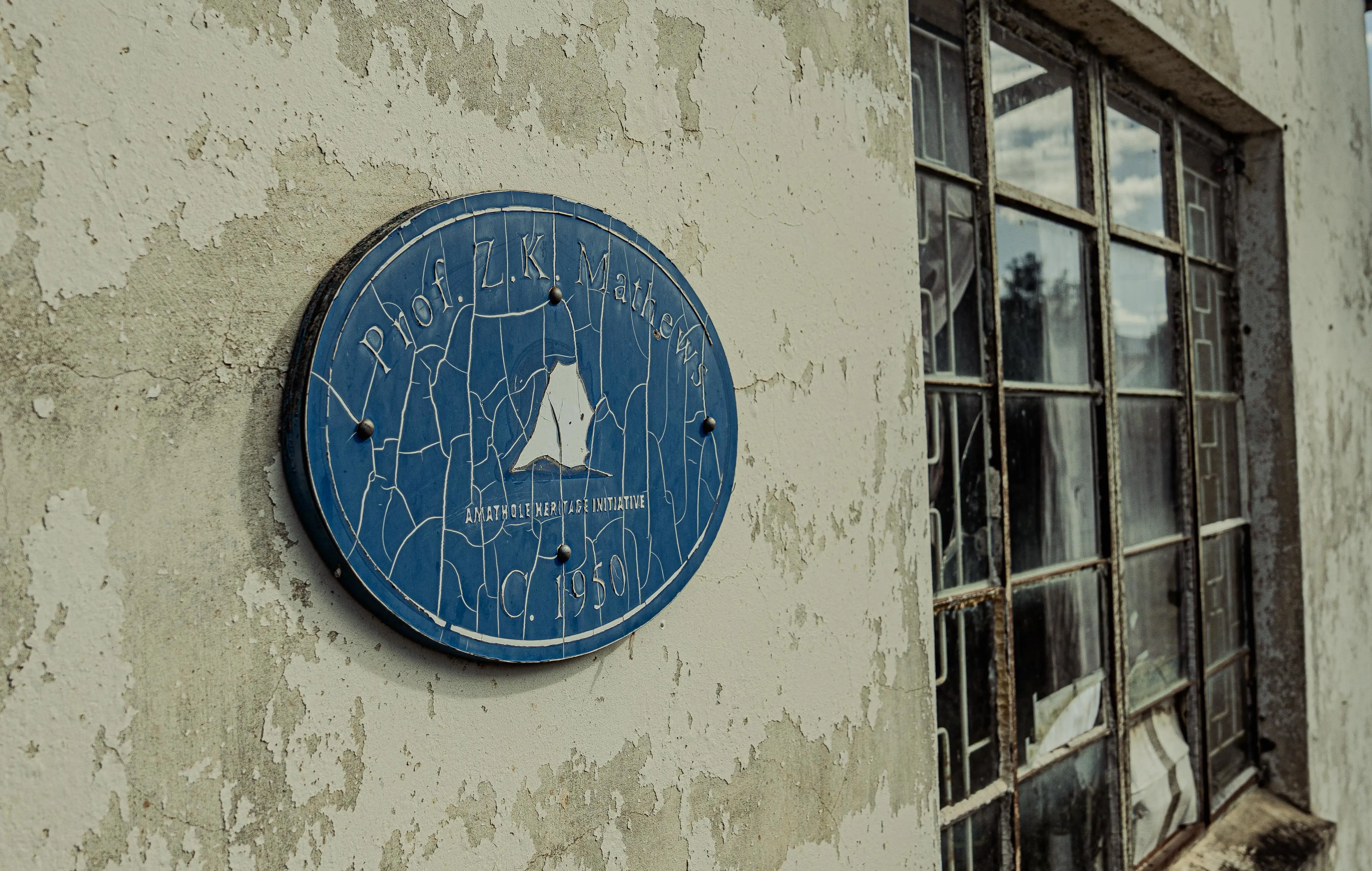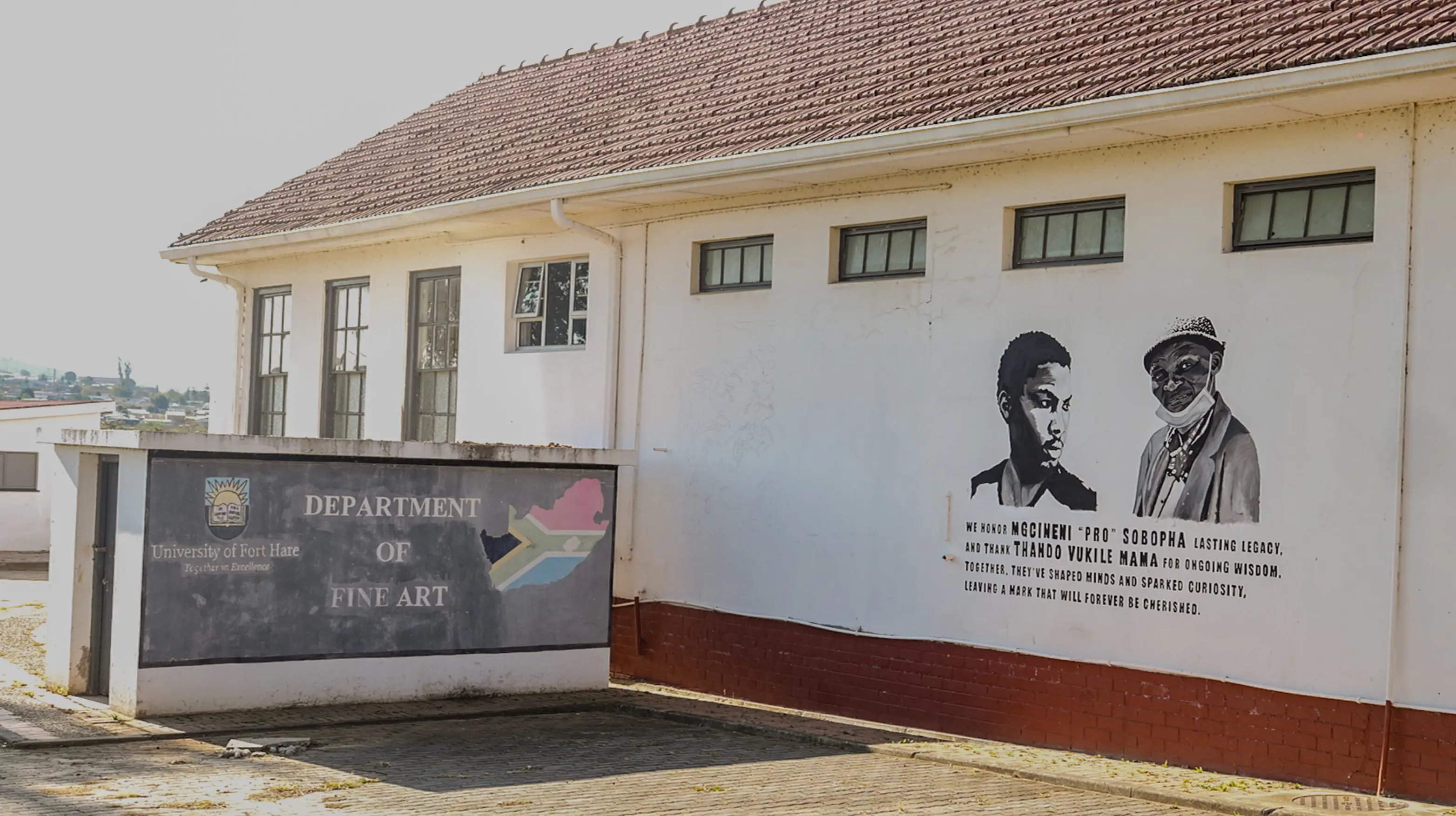The broken, battered Freedom Charter dream 70-years on
Thabiso Goba
25 June 2025 | 6:48It has been 70-years since political formations from all racial groups - black, white, coloured and Indian – met for the Congress of the People in Kliptown Soweto.

Andile Maboza who lives with two other housemates at the house formerly of Professor ZK Matthews. Picture: Sphamandla Dlamini
Most of the heritage monuments honouring the Freedom Charter lie broken, looted and dilapidated which some say is a caricature of the democratic government.
It has been 70-years since political formations from all racial groups - black, white, coloured and Indian – met for the Congress of the People in Kliptown Soweto.
During the congress, the Freedom Charter was adopted as a blueprint to what a democratic South Africa should look like.
“South Africa belongs to all who live in it, black and white, and that no government can justly claim authority unless it is based on the will of all the people,” reads the Freedom Charter.
This sentiment was in opposition to the values espoused by the Apartheid government of the time which was run by the National Party.

ZK MATTHEWS
In 1953, Cape ANC President, Zachariah Keodirelang Matthews called for a national convention of all racial groups, to consider the country’s problems and draw up a freedom charter.
At the time, Matthews was lecturing at the University of Fort Hare in Alice, Eastern Cape.
To honour his legacy, in 2016, the house ZK Matthews lived in was declared a national heritage site.
There is a road sign in the Alice central business district which contains an hourglass, an arrow and the words “ZK Matthew’s House.”
When navigating through the small rural town, one is directed towards the ZK Matthews’ heritage site via clear signage, depicting an hourglass and an arrow.
The hourglass is a symbol for a heritage site, meaning the house has significant cultural importance.
If a potential tourist or local were to follow the road sign, it would lead them to a fading street pole sign written his name and Matthew’s house awkwardly located about 20-metres adjacent to it.
The grass leading to the house is almost knee high, the car sandtracks leading to the house are barely visible and there is a large fallen tree with rotting roots.
The house itself is dilapidated; all of its windows have been broken and some of the cream white paint is peeling off to reveal the face brick.
“I don’t want to lie, i know nothing about ZK Matthews. I have heard once or twice on the news that he was a professor at Fort Hare University and that’s all i know,” said Andile Maboza, who lives in the dilapidated heritage house.
Maboza lives with two other occupants in the house.
It has no electricity or water, they rely on the kindness of neighbours for boiled water to bath and to charge their phones.
The trio is part of a jobs project by the provincial department of Public Works, where it hired previously unemployed people to guard national heritage sites.
During the early 2000’s the house used to be student residence for those attending at the Fort Hare University’s Alice campus.
However, this could not be sustained as students found it unsafe living outside the university’s premises.
Maboza is familiar with the danger of occupying the house as homeless people regularly visit the house in the dead of the night looking to loot whatever sellable products remain.
“We used to struggle a lot with these boys who smoke wanting to come here and do their thing. They would break in at night and we would have to chase them away,” said Maboza.
He said there is no remaining literature in the house to explain its historical relevance.
The only thing that points to the fact it used to be ZK Matthews House is a cracked, blue oval plaque near the front door.
Oscar Mabuyane, Eastern Cape Premier, said the provincial government is ‘concerned’ about the state of some of its heritage sites.
“Our interest is to turn those into tourist products and destinations. So it is in our interest to work it out and look at that as part of developing Alice,” he said.
“We have invested a lot in Alice where the ZK Matthews building is, we are putting a small-town revitalisation programme there.”

CHIEF TYALI’S GRAVESITE
Established in 1916, the Fort Hare University boasts among its distinguished alumni, celebrated figures like ZK Matthews, Nelson Mandela and Oliver Tambo among others.
However the course of institution’s history and perhaps even South Africa, would be different had Chief Mkrazuli Tyali of Imingcangathelo not donated some of his land to Scottish Missionaries.
During the 1800’s, the town of Alice in the Eastern Cape was at the centre of the Frontier Wars between Xhosa people and British colonialists.
The British wanted to expand it land dispossession and met resistance from natives.
While the specific year is unknown, during the thrones of the wars, Chief Mkrazuli Tyali of Imingcangathelo donated thousands of hectares of land along the Tyhume River to Scottish Missionaries.
The move would have been controversial at the time as Xhosa people were resisting land dispossession from European settlers however the missionaries had promised Tyali to build an education facility for both white and black people.
In 1841, Lovedale College was officially opened as a semi-multicultural school with nine White boys, six Coloured and a multiple number of Black students (https://sahistory.org.za/place/lovedale-missionary-school) .
One year later, Chief Tyali died of prostate cancer with his vision to bring education to his people partially achieved.
On the same land he donated, the Scottish missionaries would facilitate the building of the South African Native College (SANC), which at the time was one of the first higher education institution in sub-saharan South Africa open to black students. (A History of the University College of Fort Hare, South Africa: The 1950s. Edwin Mellen Press, 2001).
SANC would later be renamed the University of Fort Hare.

In 2017, Chief Tyali was honoured with a tombstone and his gravesite declared a national heritage site.
The gravesite, where Chief Tyali lies, is located on the side of the road – in the mountainous small town of Hogsback
There are neither markings, road signs nor symbols to indicate its location.
The path leading to the gravesite has tall grass and trees.
“Honestly, as you can see this place is a forest,”said Prince Banzi Tyali, Chief Tyali’s great grandson.
“You will remember back in those days, chiefs were not buried close to the people, that’s why he is buried here.”
The tombstone is surrounded by a rusty metal cage, with the overgrown grass blocking the words on the obituary.
Banzi said his family is dismayed with the current government and its neglect of his great grandfather’s legacy.
“When we look at where the chief is laying, we get concerned at whether our black government is aware of the role he played. That hurts us very deeply,” he said.
Not too far from the gravesite is another heritage site, the Woburn Post, Chief Tyali Great Place.
All the properties are in ruins and have been hollowed out - with no doors, windows and in case of one, no roof.
One of the town’s oldest resident, 90-year-old Melithuze Mavubengwana, said the properties once belonged to a white farmer.
He said they housed cattles and were a processing centre for citrus fruits that are grown across the area.
Mavubengwana said the properties were deserted by the white farmers in the early 90’s, when it was clear apartheid was coming to an end.
“The white people ran away. They were not chased away but left of their own accord because they were scared,” he said.
Mavubengwana said the local chiefs bickered over who should inherit the farms and cattle, which eventually led to the place falling into ruin.
Ntombekhaya Mavubengwane said when she grew up, there were white-owned citrus farms all over Hogsback.
The area’s warm climate makes its ideal for citrus growing.

Ntombekhaya said the current state of the area, makes her yearn for the old days.
“Sometimes I think us as black people, especially Xhosa people, can be lazy. We don’t want to stand up and do things for ourselves,” she said.
“Those citrus farms used to employ a lot of people, even school children. The white people ran away and the person who was left with them failed to manage it.”
The Mavubengwane family is politically inclined.
Ntombekhaya’s brother, Sizakele, joined the ANC and later uMkhonto WeSizwe. He died shortly after Nelson Mandela was released from prison due to health complications.
Ntombekhaya said when she looks around where she lives, the ideas contained in the Freedom Charter have not been realised by the democratic government.
“We have electricity but sometimes we get cut off. We struggle with water a lot,” she said.
“In terms of free education, yes we have that, but the issue is when our children finish school there are no job opportunities.”
Vusimuzi Gayi lives in the rural area of Gxwederha in Alice. At 31-years-old, Gayi was born in the same year South Africa’s first democratic government was sworn in, 1994.
However, like 46,1% of young people in the country, Gayi is unemployed.
He said he knows nothing about the Freedom Charter and his town’s historical links to it.
“There are no jobs and there are no opportunities. It’s really difficult here for young people,” said Gayi.
Thobeka Mjo, an ANC ward councillor, has lived in Alice since 1993.
She says much of the households in the villages have electricity, which was a distant dream when she was growing up.
“People are also able to go to town whenever they want because there are pathways now. We cannot disagree the roads are not in good condition however atleast people don’t have to walk long distances to get to town now,” she said.
Get the whole picture 💡
Take a look at the topic timeline for all related articles.
Trending News
More in Politics

29 November 2025 06:42
ANC Tshwane elective conference kicks off amid factional battles and leadership contests

29 November 2025 06:40
Malema says EFF's ultimate goal is for Ramaphosa to be impeached over Phala Phala scandal

29 November 2025 06:12
Tshwane council votes to establish ad hoc committee to consider next steps regarding forensic report's findings on Modise









